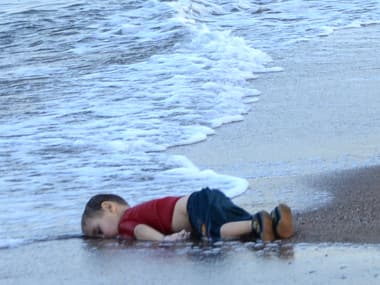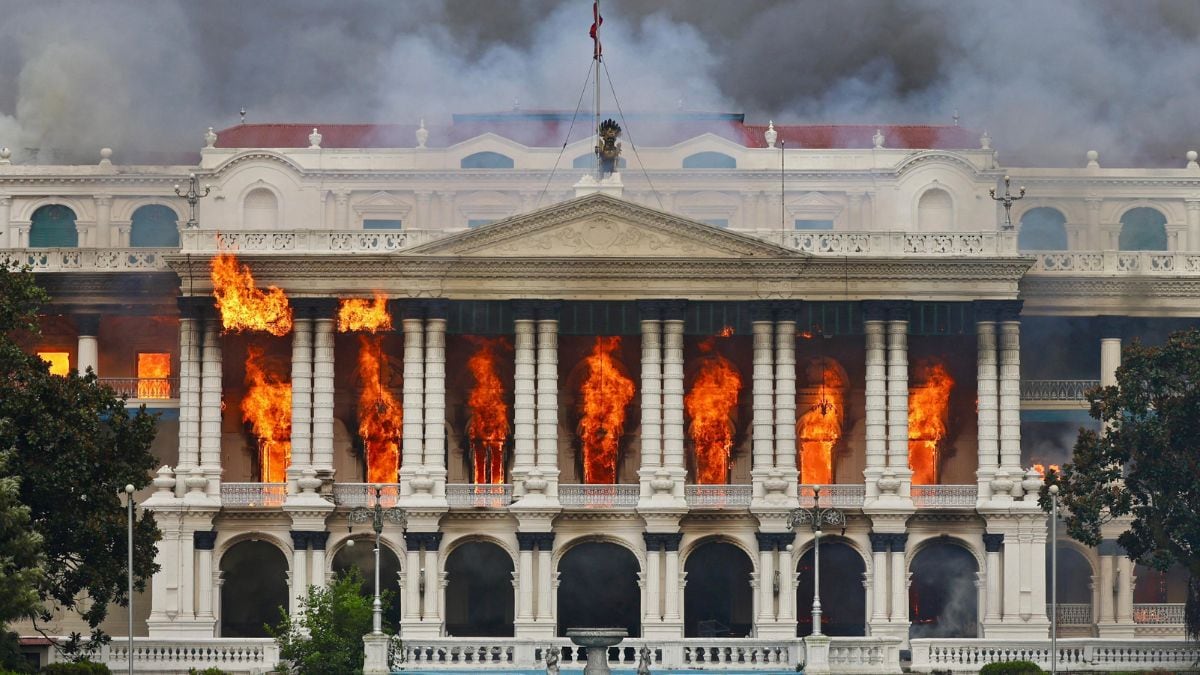The headline in The Times of India sums it up most succinctly. Finally, one death makes world weep for migrants. [caption id=“attachment_2421166” align=“alignleft” width=“380”]  The lifeless body of three-year-old migrant, identified by Turkish media as Aylan Kurdi, was found on a sea shore in Bodrum, Turkey on early Wednesday. AFP[/caption] The body of three-year-old Aylan Kurdi lying face down on the Turkish beach has indeed made the war in Syria real to many of us. What TOI did not mention is that it also finally made a dent in our own wall-to-wall banner headline coverage of the Indrani Mukerjea celebrity crime story. TOI mentions the internal debate about publishing that photograph, something many other newsrooms around the world have also grappled with publicly. Is this image too disturbing? Too shocking? Is it an invasion of privacy even in death? Another instance of the long lens of an intrusive media culture that respects nothing? Actually an intrusive media culture is one which climbs up to the window of a man in his eighties to shout questions about his daughter charged with murder. An intrusive media culture is one which keeps ringing the doorbell of a man purported to have been in a relationship with Indrani Mukerjea over two decades ago. That is disturbing, that is an invasion of privacy, that is 24x7 media that respects nothing. It is a sign of our own jadedness that we now seem unable to tell the difference between an image that speaks to a moral crisis and an image that represents our own lack of moral qualms. Siddhartha Das, wearing a cap on his head, his face covered with a handkerchief, does not humanise the tragedy that has befallen his daughter. Young Aylan Kurdi however does humanise the tragedy that has gripped his country. Unlike the Sheena Bora case, this a tragedy most of us know little about. Now we will run explainers to bring us up to speed with what is happening in Bashir Assad’s Syria since 2011. It will merit the timelines and charts that we have used to explain the twists and turns of the Bora case. As many have already pointed out, this is not the first war or uprising that has stumbled upon its iconic photograph. More often than not it is has involved a child. The little girl running naked after a napalm attack in My Lai. The ghostly child, her eyes glassily opaque killed by the poisonous gases of Bhopal. A vulture waiting to prey on a collapsed Sudanese child trying to get to a food centre during a famine in South Sudan. Those are the tragedies we remember because they found their image, an image that could speak more than a thousand numbers. Stories sometimes drown in their own numbers. Have 15,000 people died because of the gas leak or should that be 25,000? But an image hangs on like an accusation, leaving its ghostly imprint on our conscience long after the numbers have melded into noise. However there is something different about Aylan that is worth noting. Compared to those other pictures, what is striking is how much it actually spares us. About the gory-ness of the war it represents. The little child in his shorts, shoes and shirt is as reassuringly ordinary as the war he is fleeing is extraordinarily brutal. And his tragic image is relatable to the world, especially the West, while the naked girl of Vietnam or the emaciated child in Sudan was indisputably foreign. “This child could be any of ours – he’s wearing fashionable clothes and is wearing trainers - and has obviously died on his own,” said Brett Rogers, director of London’s Photographer’s Gallery to the BBC. He could have been but he is not. If he had been then he would not have died because he would have got that visa to Canada his aunt in that country applied for (since denied by Canada). Those other far more graphic images were meant to highlight the horrors of a war or famine in a foreign country. This one has become less about the war and more about the refugees knocking on Europe’s doors. A refugee who looked like “any of ours”. As a CNN headline says “Image of 3-year-old who washed ashore underscores Europe’s refugee crisis.” It does not mean Europe will open its doors to refugees from Syria just as Raghu Rai’s unknown child did not mean Union Carbide’s Warren Anderson had to pay for what his company did in Bhopal. And it does not mean Syria’s Arab neighbours like Kuwait and Saudi Arabia are being moved to throw their doors open either. Whether those doors open or not for other asylum-seekers, little Aylan Kurdi, the well-dressed refugee who did not make it to safe harbour, will keep knocking on the world’s conscience.
The body of three-year-old Aylan Kurdi lying face down on the Turkish beach has indeed made the war in Syria real to many of us. What TOI did not mention is that it also finally made a dent in our own wall-to-wall banner headline coverage of the Indrani Mukerjea celebrity crime story.
Advertisement
End of Article


)

)
)
)
)
)
)
)
)



